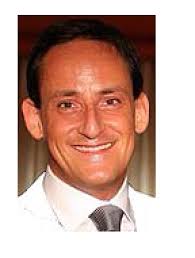Author Interviews, OBGYNE, Surgical Research / 03.01.2016
Surgical Abortions Raise Risk of Future Pre-Term Births and Obstetrical Complications
MedicalResearch.com Interview with:
Gabriele Saccone, MD
Department of Neuroscience
Reproductive Sciences and Dentistry
School of Medicine
University of Naples Federico II Naples, Italy
Vincenzo Berghella, MD
Department of Obstetrics and Gynecology
Division of Maternal-Fetal Medicine
Thomas Jefferson University
Philadelphia, PA 19107, USA
Medical Research: What is the background for this study? What are the main findings?
Dr Saccone: Preterm birth (PTB) is the number one cause of perinatal mortality in many countries, including the US. The annual societal economic burden associated with Preterm birth in the US was at least $26.2 billion in 2006, or about $51,600 per infant born preterm. Defining risk factors for prediction of PTB is an important goal for several reasons.
- First, identifying women at risk allows initiation of risk-specific treatment.
- Second, it may define a population useful for studying particular interventions.
- Finally, it may provide important insights into mechanisms leading to Preterm birth.Prior surgery on the cervix, such as cone biopsy and LEEP procedures, is associated with an increased risk of spontaneous PTB. History of uterine evacuation for abortion, by either induced termination of pregnancy (I-TOP) or treatment of spontaneous abortion (SAB) by suction dilation and curettage (D&C) or by dilation and evacuation (D&E), which may involve mechanical and/or osmotic dilatation of the cervix, has been associated with an increased risk of PTB in some studies, but not in others. Our systematic review and meta-analysis pooled data from 36 studies including 1,047,683 women with prior abortion. We found that history of surgical abortion is an independent risk factor for Preterm birth and also other obstetric complications including low birth weight and small for gestational age, while prior medical abortion with first-trimester mifepristone or mid-trimester misoprostol was not associated with an increased risk of PTB. The biological plausibility to explain our findings is not completely clear. However, three main hypotheses can be made.
- The increased risk of Preterm birth could result from the overt or covert infection following surgically uterine evacuation,
- as well as from mechanical trauma to the cervix leading to increased risk of cervical insufficiency.
- Moreover, surgical procedures including curettage during D&E may result in scar tissue that may increase the probability of faulty placental implantation.

 MedicalResearch.com Interview with:
Dr. Giuseppe Andò
University of Messina, Messina, Italy
Medical Research: What is the background for this study?
Dr. Andò: Patients’ preference for radial access for coronary angiography and percutaneous intervention is paralleled by an almost complete abolition of access-site bleeding. Given the deleterious impact of any clinically relevant bleeding event on short- and long-term outcomes, the use of radial access should translate into a reduction in net adverse events, especially in patients with high risk of bleeding such as those with an acute coronary syndrome. Nonetheless, studies conducted over the past decade by pioneers of
MedicalResearch.com Interview with:
Dr. Giuseppe Andò
University of Messina, Messina, Italy
Medical Research: What is the background for this study?
Dr. Andò: Patients’ preference for radial access for coronary angiography and percutaneous intervention is paralleled by an almost complete abolition of access-site bleeding. Given the deleterious impact of any clinically relevant bleeding event on short- and long-term outcomes, the use of radial access should translate into a reduction in net adverse events, especially in patients with high risk of bleeding such as those with an acute coronary syndrome. Nonetheless, studies conducted over the past decade by pioneers of 








